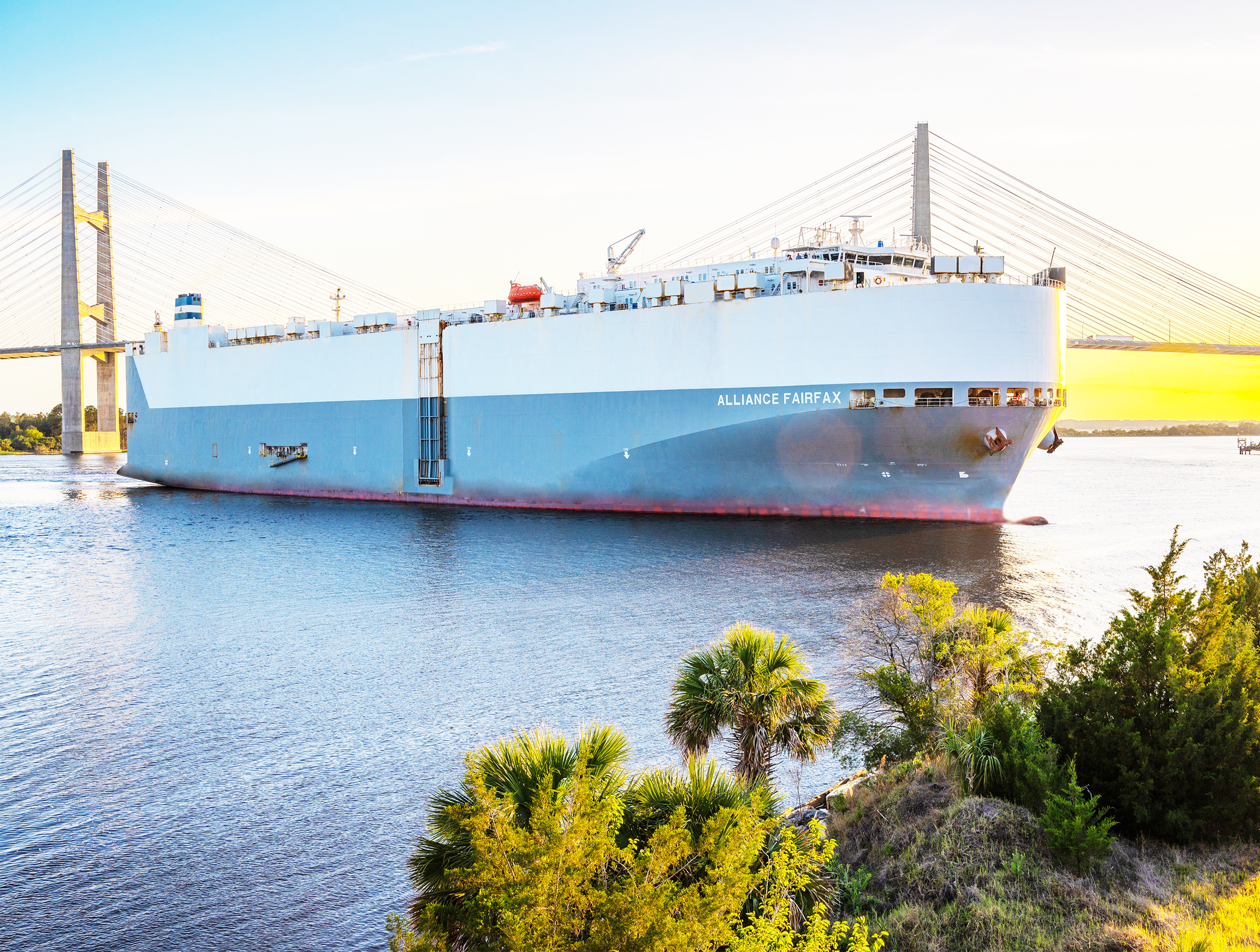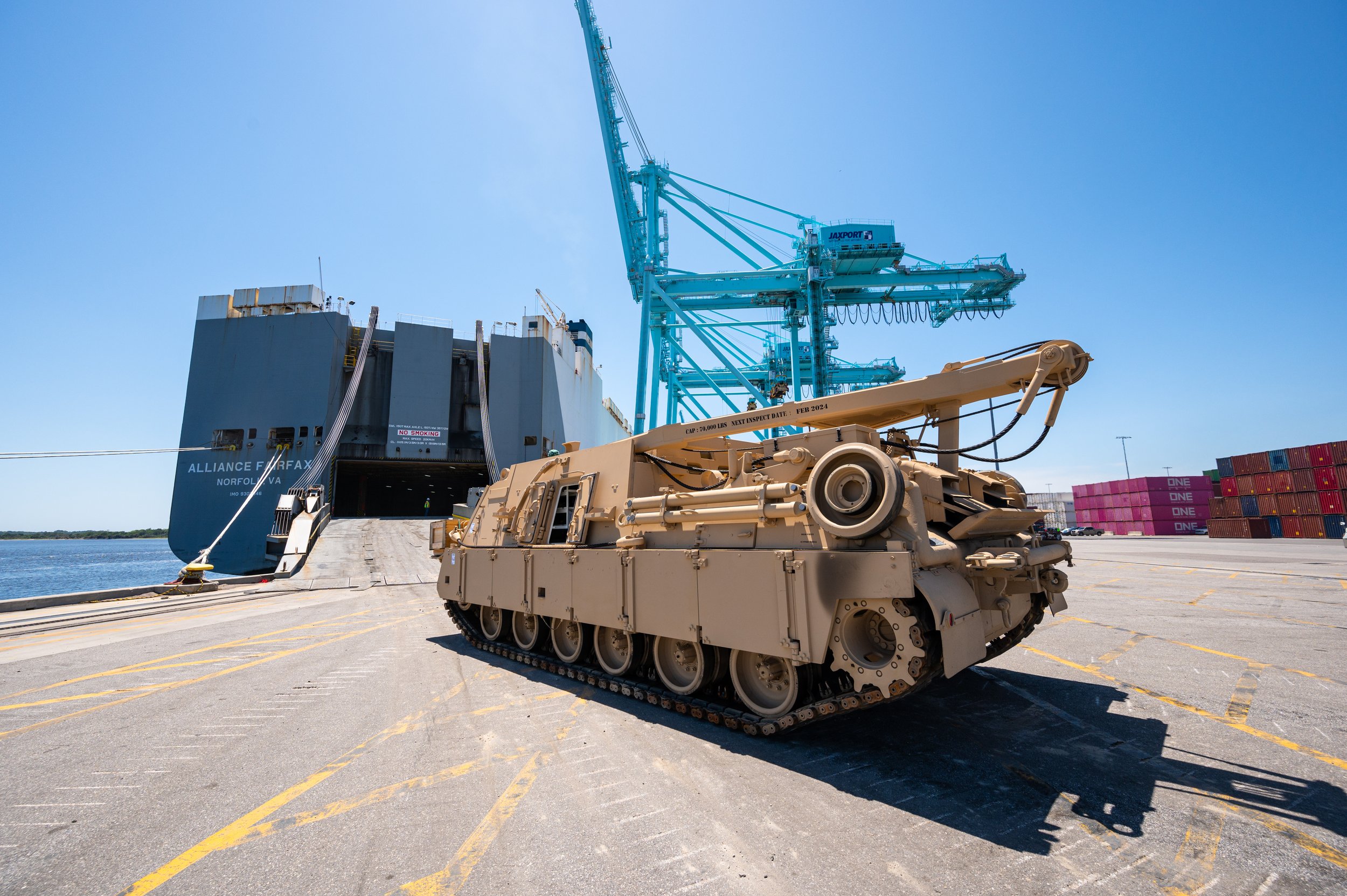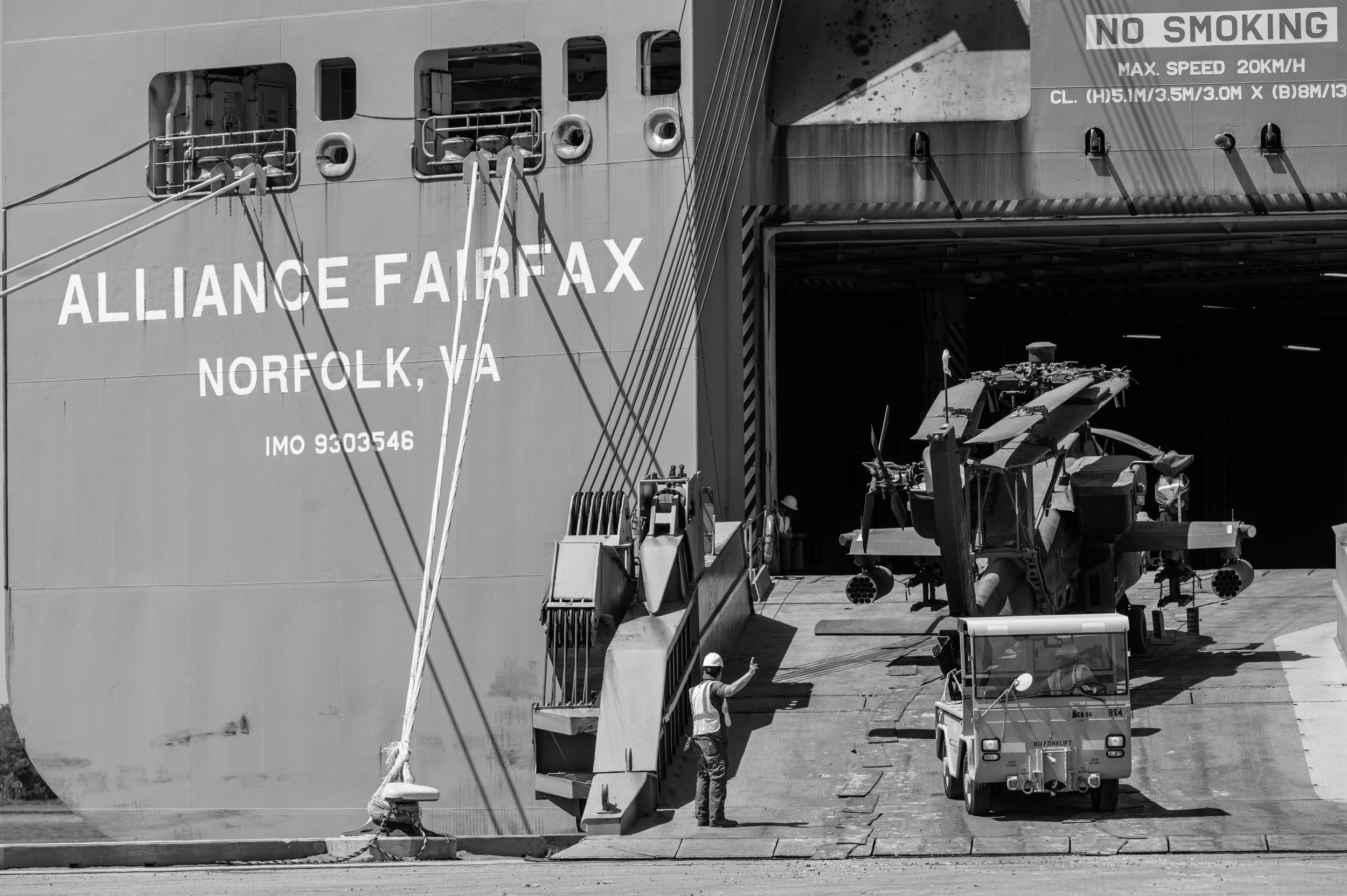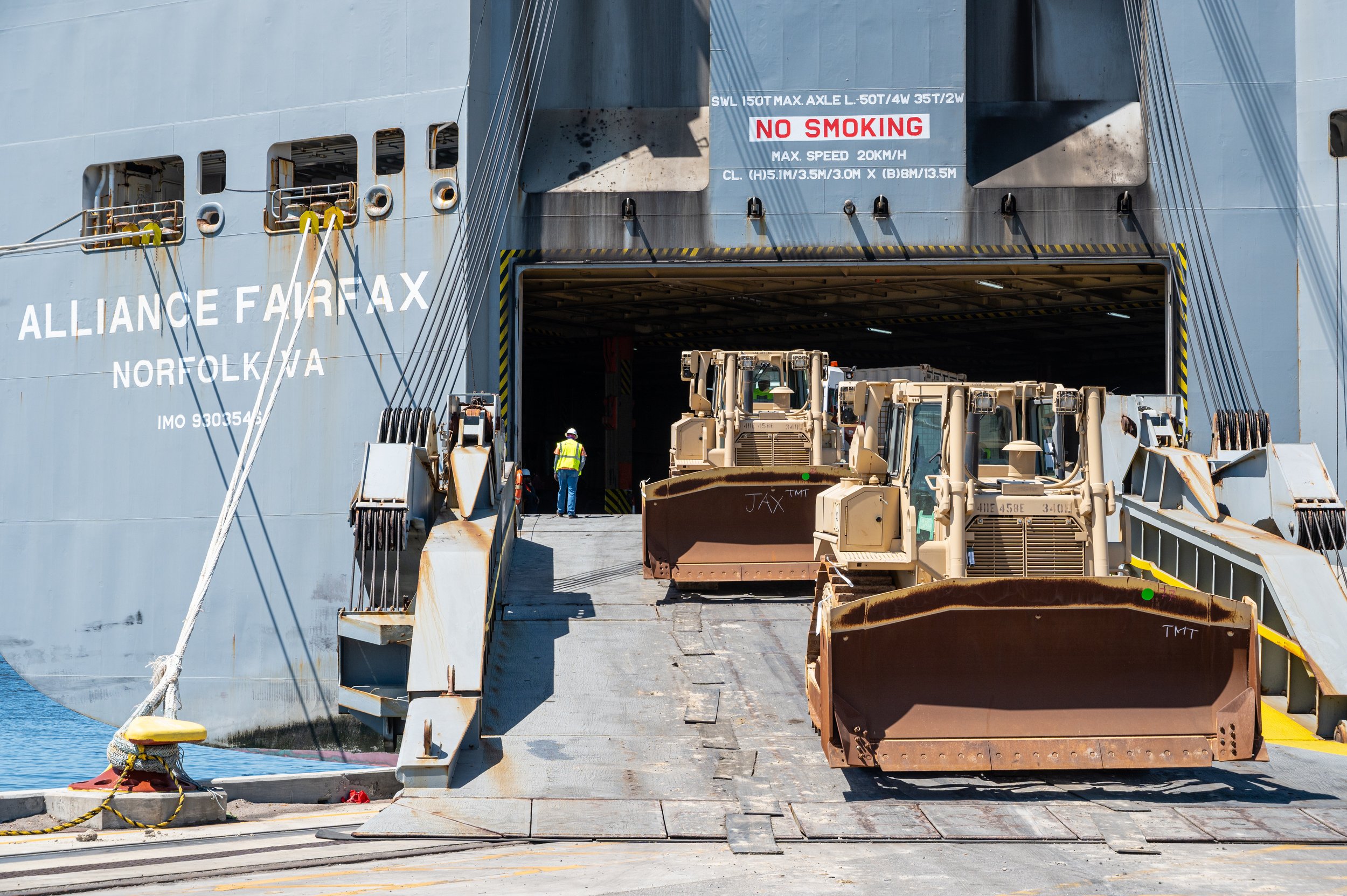
ABOUT US
Leading the US Flag Ocean Transportation Industry Since 1925
Our heritage as a leading US Flag ocean carrier goes back to 1925 when James Farrell established the American-South African Line.
About Farrell Lines
Our heritage as a leading US Flag ocean carrier goes back to 1925 when James Farrell established the American-South African Line. Today, we carry on that legacy of industry leadership with 3 US Flag roll-on-roll-off (RO/RO) vessels, providing end-to-end international ocean transportation to the US military, participation in the Maritime Security Program (MSP) and the Voluntary Intermodal Sealift Agreement (VISA).
Recently, to honor the proud history of Farrell Lines, our logo has been updated to pay tribute to the original saltire flag.

Experts in Delivering
With industry-leading expertise coordinating complex high-value deliveries, we are the clear choice to fulfill your international transportation needs.
3 US Flag roll-on, roll-off (RO/RO) carriers
Adjustable deck configurations to optimize space for militarily useful stowage
International end-to-end transportation solutions
Unparalleled International Transportation Services
Ocean Carriage
Get cost-competitive ocean shipping for rolling stock on services between the US East Coast and the Gulf of Mexico to the Middle East and Southwest Asia.
Inland Transportation
Access a vast network of intermodal inland services at both the origin and destination for seamless, on-time deliveries.
Logistics Solutions
We have specialized logistics services for rolling-stock cargo with expertise in tarping, lashing, documentation, customs, and more.
Customizable US Flag Roll-on, Roll-off Fleet of Carriers
Our fleet consists of three pure car/truck carriers—Alliance St.Louis, Alliance Norfolk, and Alliance Fairfax. Each of our vessels is optimized with adjustable deck configurations to maximize militarily useful stowage.
For more details on our fleet and to learn how Farrell Lines can accommodate your cargo, please contact us.

Farrell Lines’ History of Leading the Transportation Industry
2023
Farrell Lines is rebranded and launches a new website.
2015
Farrell Lines has a total of three working RO/RO vessels.
2012
Farrell Lines awarded a Multimodal Contract with USTRANSCOM.
2010
Farell Lines acquires two new US Flag RO/RO vessels to its fleet.
2000s–2010s
In 2000, Farrell Lines was acquired by the Chilean company CSAV (Compañía Sud Americana de Vapores.)
2007—Maersk Line, Limited acquires Farrell Lines.
1950s–1970s
Farrell Lines expanded its services to various global destinations, including Europe, the Mediterranean, and Asia.
The company operated both cargo and passenger ships, contributing to international trade and travel.
World War II Era (1940s)
During World War II, Farrell Lines played a significant role in transporting troops and supplies for the US military.
1920s–1940s
Farrell Lines Shipping Company was founded in the early 1920s by James A. Farrell, Jr.
The company initially focused on shipping routes between the United States and South America.
Farrell Lines Supporting The Warfighter Since 1925.








